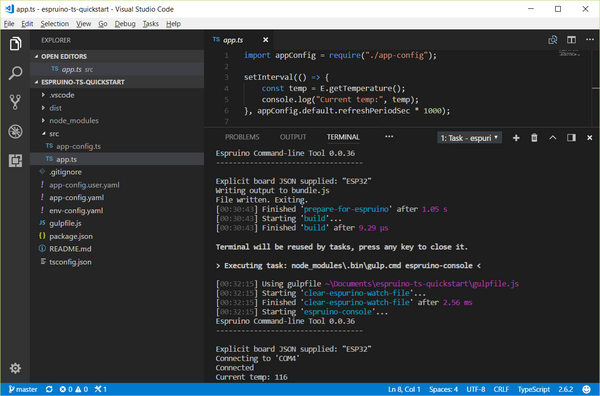

regular scripts run immediately, before the rest of the page is processed as modules are deferred, the script runs after the whole page is loadedĪlert(typeof button) // button is undefined, the script can't see elements below relative order of scripts is maintained: scripts that go first in the document, execute first.Īs a side-effect, module scripts always “see” the fully loaded HTML-page, including HTML elements below them.Īlert(typeof button) // object: the script can 'see' the button below.module scripts wait until the HTML document is fully ready (even if they are tiny and load faster than HTML), and then run.downloading external module scripts doesn’t block HTML processing, they load in parallel with other resources.Module scripts are always deferred, same effect as defer attribute (described in the chapter Scripts: async, defer), for both external and inline scripts. You may want to skip this section for now if you’re reading for the first time, or if you don’t use JavaScript in a browser. There are also several browser-specific differences of scripts with type="module" compared to regular ones. authentication), but expect the credentials to come into the config object from outside: The top-level application script may do that.įor instance, the admin.js module may provide certain functionality (e.g. On the first import we initialize it, write to its properties.A module exports some means of configuration, e.g.

#What type of file is a module in node js visual studio code code#
Then it can export a configuration object expecting the outer code to assign to it. In other words, a module can provide a generic functionality that needs a setup. Such behavior is actually very convenient, because it allows us to configure modules. Exports are generated, and then they are shared between importers, so if something changes the admin object, other importers will see that. That’s exactly because the module is executed only once. Changes made in 1.js are visible in 2.jsĪs you can see, when 1.js changes the name property in the imported admin, then 2.js can see the new admin.name. Both 1.js and 2.js reference the same admin object import allows the import of functionality from other modules.įor instance, if we have a file sayHi.js exporting a function:.


A module may contain a class or a library of functions for a specific purpose.įor a long time, JavaScript existed without a language-level module syntax. As our application grows bigger, we want to split it into multiple files, so called “modules”.


 0 kommentar(er)
0 kommentar(er)
